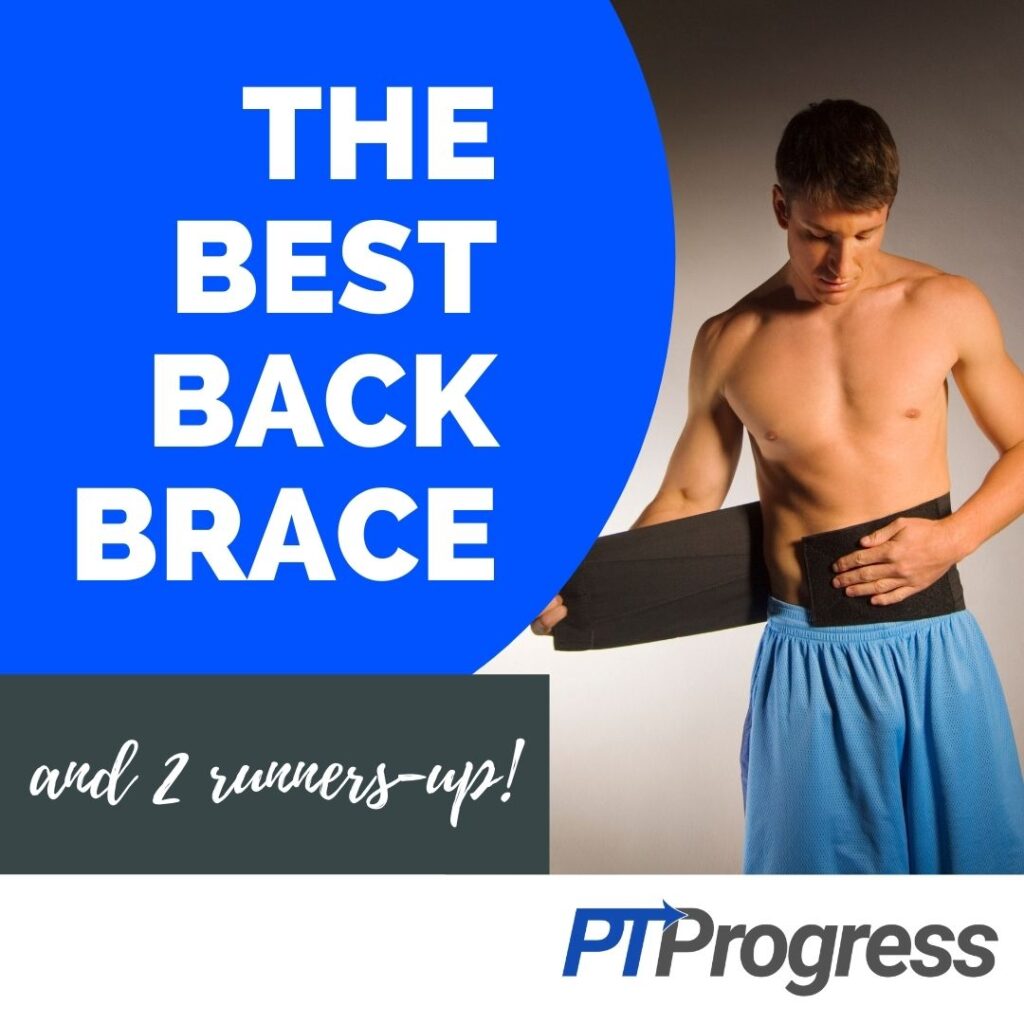
Chronic back pain is as uncomfortable as it is common, affecting a tens of millions of adults each year. But whether the cause is arthritis, a ruptured disk, or a strained muscle, wearing a back brace may help to relieve pain in the short term.
The Role of Back Braces
When worn properly, a brace can provide the following benefits:
- Spinal support
- Decompression
- A restricted range of motion
Let’s look at each of these features one by one.
Spinal Support
Not all back braces follow the same design, but if you get one with a wide band (more like a corset than a belt), your spine will feel more supported. You won’t rely on weakened or painful muscles to keep good posture, which may help to relieve symptoms as you work on back exercises to improve stabilization.
Decompression
Your pain might be worsened from excess weight, or muscles that are too weak to support that weight. With a thick, snug brace, you can reduce the pressure on those back muscles and redistribute the weight throughout your torso.
Restricted range of motion
When you have back pain, the last thing you want to do is bend over or twist in a way that further hurts your back. A good brace will restrict these kinds of movements and remind you to keep good posture, even subconsciously.
A Back Brace backed by research
These benefits aren’t just based on my opinion; they’ve been demonstrated in scientific research. For example, in one study 62 patients with chronic low back pain wore a rigid lumbar brace for 3 months. At the end of the study, 79% of these patients experienced a 30% reduction in pain, and 62% experienced a 50% reduction in pain.
If these results are truly replicable, then there’s a good chance that wearing a lumbar brace will cut your pain in half.
Later I’ll share one caveat to wearing a brace, so be sure to read to the end. First, though, let’s look at 3 of the best back braces for chronic back pain.
3 Top-rated Back Braces
Freetoo Back Brace
The Freetoo back brace has all the bells and whistles of a supportive, decompressive brace. Worn like a corset, this brace features 6 stays – 2 steel and 4 aluminum – that will ensure you stand straight all day, pain-free.
If you have a short torso or hourglass shape, you may find that other back braces fit uncomfortably high on your chest. But the Freetoo is tapered to provide full support in the back but a small profile in the front.
Those who have bought and used this brace marvel at its high quality, especially considering the low price. This isn’t cheap plastic or polyester; from the hook-and-loop closures to the velvety-soft lining, the Freetoo brace is made to last.
- 5 sizes: Fits waists from 23” – 67”
- 9.7” in the back; 5” wide in the front
- 6 stays: 4 “memory-aluminum” and 2 steel
- 90-day refunds
- $33
Sparthos Back Brace
If you like the Freetoo brace but want to steer clear of metal parts, the Sparthos lumbar brace might be just for you. The rigid stays are made of plastic, which means you can zip through airport security without setting off the metal detectors.
The Sparthos brace is a favorite among frequent fliers for reasons besides its composition. The brace also includes a removable cushion for extra lumbar support, useful for when you’re sitting all day.
The tapered shape on this brace isn’t as drastic as the Freetoo, so if you have a short torso the fit might be uncomfortably high. And while the four overlapping flaps make the brace stable, they also add some bulk.
- 3 sizes: Fits waists from 26” – 72”
- 8” wide in the back, 6” wide in the front
- Removable lumbar pad
- Plastic stays
- $30
Best Back Brace for Low Back Pain: Mueller
Although any of the 3 back braces on this list will serve you well, the Mueller brace is considered the best for its low price point, widespread availability, and high Amazon ratings.
There’s only two sizes to choose from, so take careful measurement of your waist. The range of sizes for this brace isn’t as far-reaching as the Sparthos or even the Freetoo, but if it fits, you’ll find it immeasurably comfortable.
The Mueller brace is low on cost but high on support. With 8 steel springs keeping your back in place, your chronic pain won’t stand a chance. Just be aware that a wrap-style brace like this one tends to run hot. Users recommend wearing it over a tight t-shirt to keep it sweat-free.
- 2 sizes: fits waists from 22” – 50”
- 4” wide in the front; 9” wide in the back
- 8 steel springs
- $16
Even the Best Back Brace isn’t the Best Medicine
You can get the best brace for less than 20 bucks, so why not try it out? There’s really no risk to wearing it, and after a few days of micro-adjustments you may find that it makes every activity exceedingly comfortable.
Perhaps the one true risk in wearing a back brace is relying on it too much. It’s not meant for long-term use and could distract you from addressing the root of the problem.
A back brace may help you return to work, enjoy a long road trip, or even stay active after an injury. But chronic pain needs a long-term solution, often through a combination of treatments.
Your doctor or physical therapist can help you manage your pain with a brace and other lifestyle changes, such as the ones described in this article.




